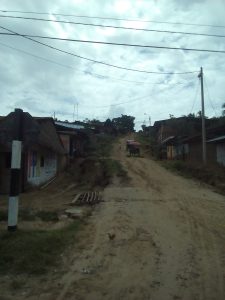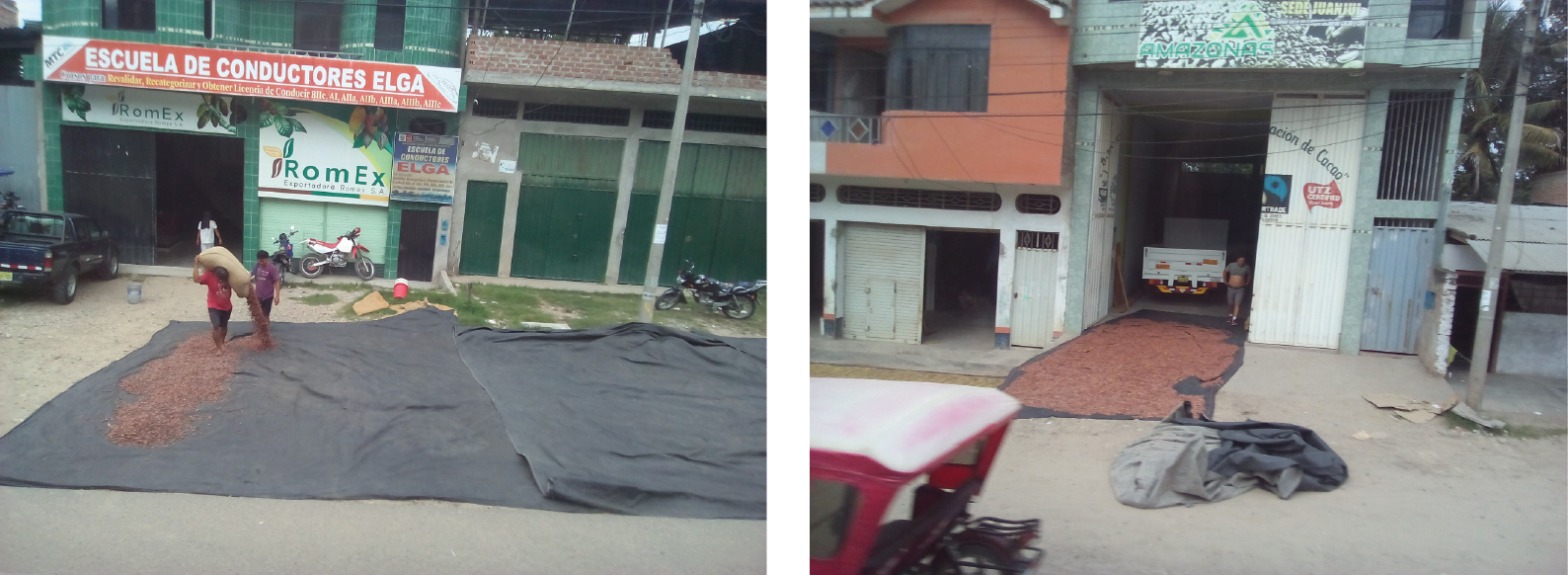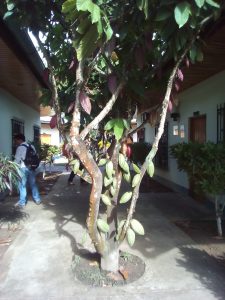Cacao Production in Peru
There are many indicators that Cacao originated from the Amazon basin around Perú where a high genetic variety of plants can be found. The Theobroma cacao, literally “the food of the gods” has a long tradition in South America as a cultivation crop. Currently the region of San Martín is producing most of the Cacao in Perú due to an effort of the governmental agency Devida, USAid, CARANA Corporation and others to help farmers to switch from illicit Coca farming to Cacao. Since 2013 those agencies have invested heavily into bringing the crop to farmers especially in the San Martin region as this region was one of the highest producer of coca and the local population had to live in fear of the terror of the drug cartels. Since then times have changed and peace has been installed in that region. The boom of the Cacao crop had brought financial investments into the region and supported rural development and enterprise creation.
https://www.youtube.com/watch?v=ElcukyS6pec
Cacao is now one of the main crops cultivated in that region, but not without problems. Many farmers had no experience with the cultivation of cacao and still use slash and burn techniques to deforest areas for new cultivation. Poor post harvest handling leads to low quality and thus low prices for the farmers. Small farmers often have plots that are located far away in the mountains without adequate road access. During heavy rains access is restricted if not impossible.
 (Road in San José de Sisa after rain / copyright N. Markiefka)
(Road in San José de Sisa after rain / copyright N. Markiefka)
Most farmers have between 0.5 and 10ha of land and 60% of the small farmers are not organized in cooperatives which provide post harvest handling for the fermentation and drying of cacao beans and other technical support and stable prices for the yield. Farmers decision not to be part of cooperatives is depending on the increased labor and investments needed to comply with the standards of the cooperatives and thus global markets for fine quality cacao.

Cacao drying (1) and fermenting (2) facilities in Cooperative San José de Sisa, where small farmers can bring their beans to be weighted (3) and get paid directly a stable price (copyright N. Markiefka)
Small farmers usually don’t ferment cacao beans but dry them directly, most on the side of the road which leads to low quality beans that are just acceptable for bulk cacao buyers and mass products, such as chocolate bars. There is a rising demand for high quality fine aroma cacao which puts pressure on the market but not yet enough for small producers to move towards improved practices and invest the necessary time and money.
 Cacao beans drying on side of the road in San Martín (copyright N. Markiefka)
Cacao beans drying on side of the road in San Martín (copyright N. Markiefka)
In an interview Prof. Enrique Gardini from the Instututo de Cultivo tropicales (ICT) in Tatapoto told me that climate change and especially the variables in rain intensity and temporal change of rain season have negative impacts on the production of Cacao as plants are more susceptible to pests and diseases, as happening at the moment with an infestation of Cacao Pod borer (Conopomorpha cramerella) and other insect pests. Farmers are not prepared to deal with those pests and are likely to lose the whole cultivation to the infesters. Infested cultivations are often abandoned and new forest area is slashed and burned to establish new plantations. The ICT runs programs in conjunction with the governmental extension services to train especially small farmers in proper handling of pests and diseases and how to make their cultivations more climate resistant. They also are the only institution that experiments with genetic material from wild relatives found in the Peruvian Amazon and different cover crops.
 Cacao tree with 7 different grafted genotypes in ICT Tarapoto (copyright N. Markiefka)
Cacao tree with 7 different grafted genotypes in ICT Tarapoto (copyright N. Markiefka)
Especially in the organic Cacao sector practices such as Agroforestry and the right handling of plants and diseases are used, which demand active participation from the farmer but with outstanding positive effects on the resistance of plants to pest attacks. As biodiversity in the cultivations is improved and through soil conservation plants have enough nutrients and are strong enough to resist and through shade management soil structure, fertility and moisture is retained. Agroforestry is the main production system for organic Cacao farmers in Perú and the number of farmers switching to this practice is slowly rising as they can see how their fellow farmers improve their yields and are more resilient face to the climatic changes in the region.
The question is: will enough farmers join before major climatic changes impact food security?
